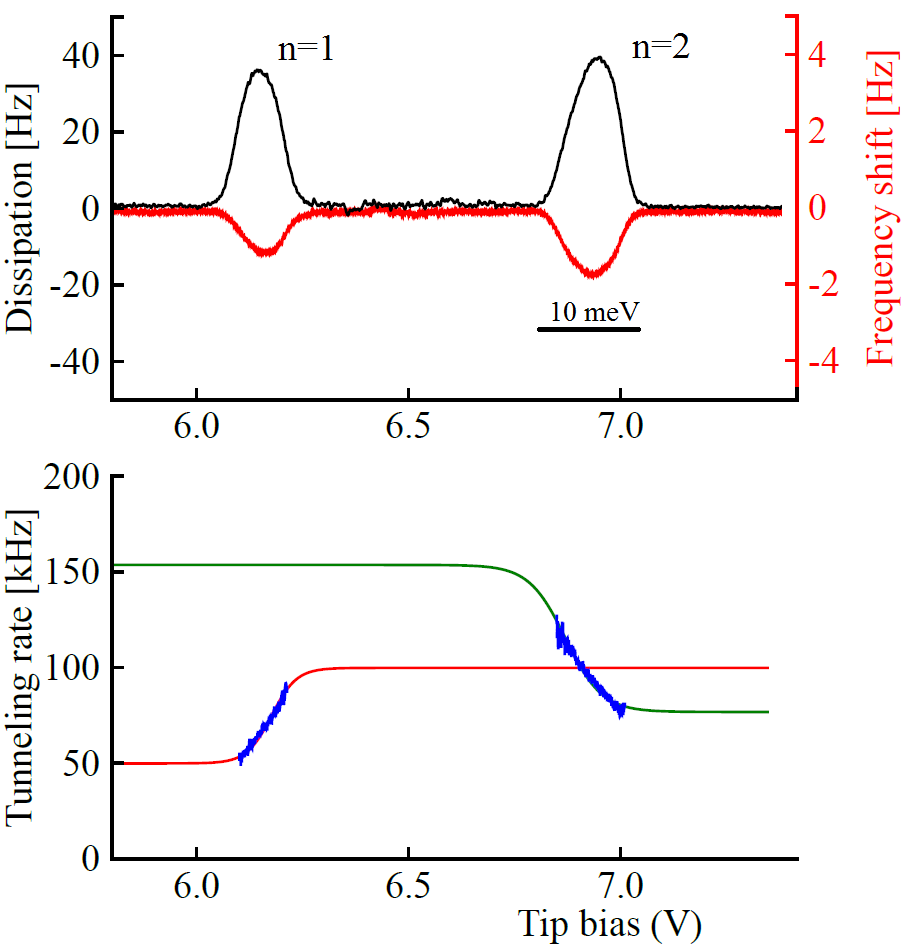
Single-electron charging
using atomic force microscopy
Antoine Roy-Gobeil
Department of Physics
McGill University
Montreal, Canada
November 1st 2016
Motivation
Measure the electronic structure of nanostructures such as self-assembled quantum dots and molecules.
- Tunable optical and chemical properties through structure design

- Potential building blocks for novel nanoelectronic devices
Challenge and why AFM is useful
- It is extremely challenging to attach electrodes to self-assembled QDs or molecules due to their small size.
- However, by using atomic force microscopy (AFM), nanostructures deposited on a surface can be imaged with sub-nm resolution

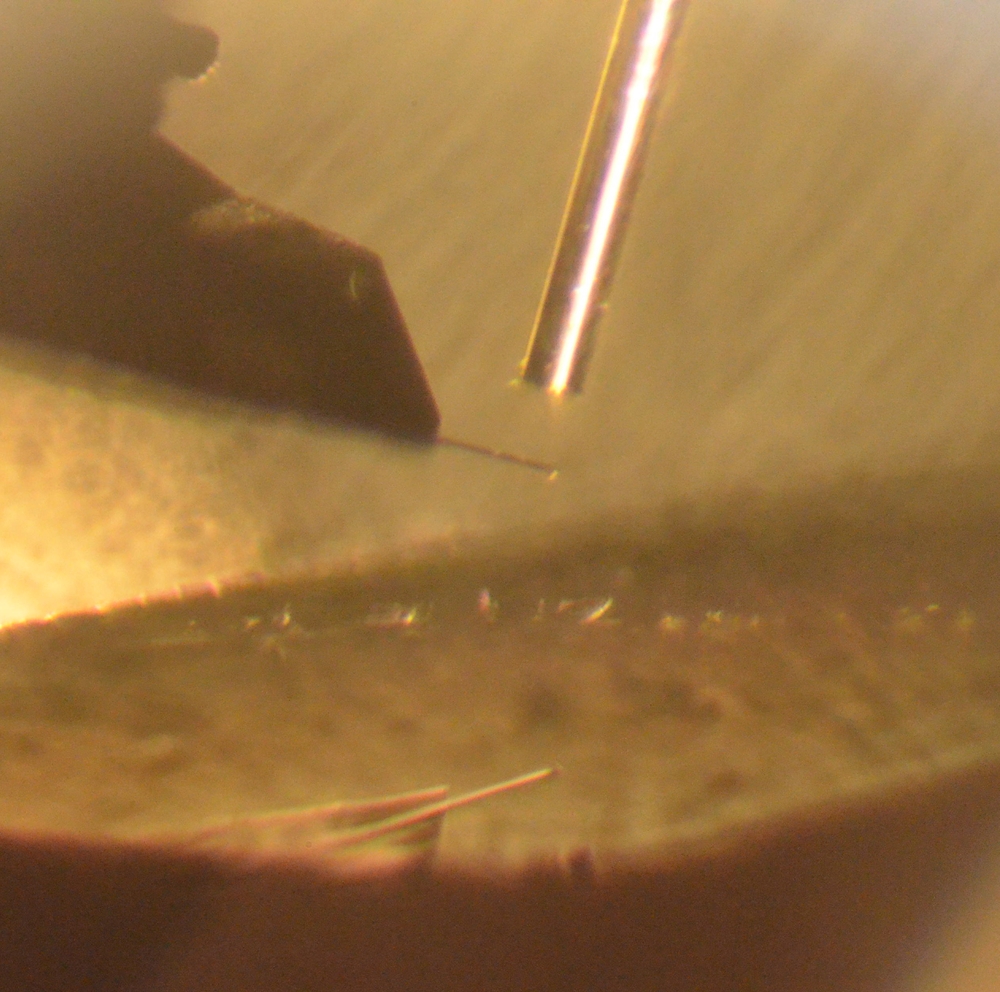
By using the AFM tip as a movable electrode, transport experiment can be performed at the nanoscale
Single-electron charging with AFM
- Quantum dot is separated from a metallic backelectrode by a tunnel barrier
- Coulomb blockade energy must be paid to add one electron
- Energy is conserved upon tunneling

Principle
- AFM tip is used as movable gate and sensitive charge sensor
- Tip oscillation modulates the energy level alignment which determines the tunneling rates
- In turn, the probability of having an extra charge on the QD, <P(t)>, is modulated and it is measured as an electrostatic force acting on the tip
Linear response
Key result from quantum linear response theory* is that the total tunneling rate determines the ratio of the change in frequency shift and dissipation:
Tunneling rate contains information about the density of state/electronic structure
Tunneling rates
- Because the dot is weakly coupled to the backelectrode, individual tunneling rates are computed using Fermi's golden rule
- The total tunneling rate on and off the dot are given by a sum over all levels k in the quantum dot taking into account Pauli's exclusion principle:
Tunneling rates are directly related to the electronic structure through the summations above
Tunneling rate - Single non-degenerate level
Metallic grains
Au nanoparticles @ 77K
- 5 nm diameter
- Self-assembled monolayer of hexadecanedithiol (C16S2)
- Template stripped gold
Au nanoparticles @ 77K
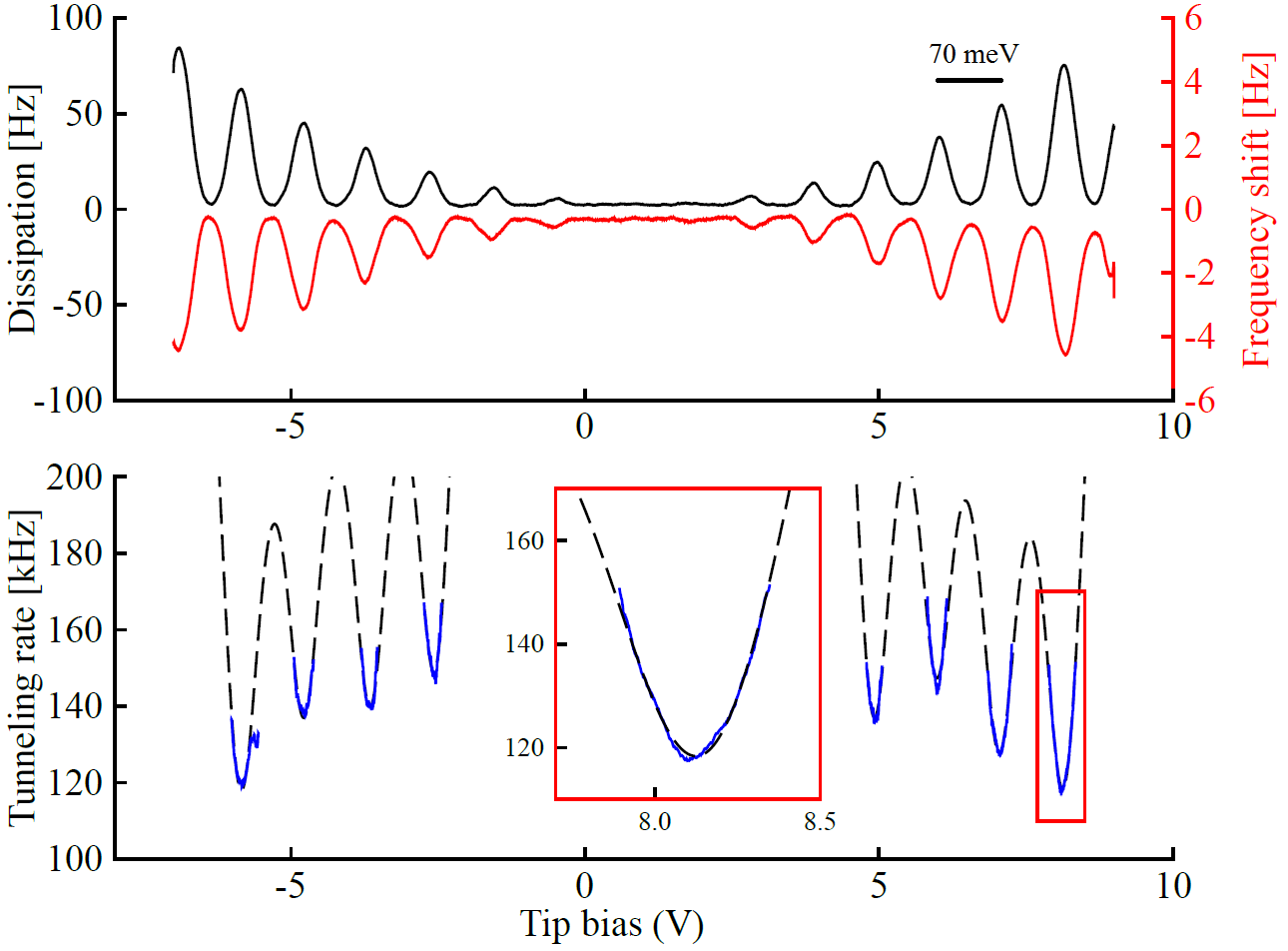
Tunneling rate - Continuous Density of States
Quantum dots
InAS QD @ 4K
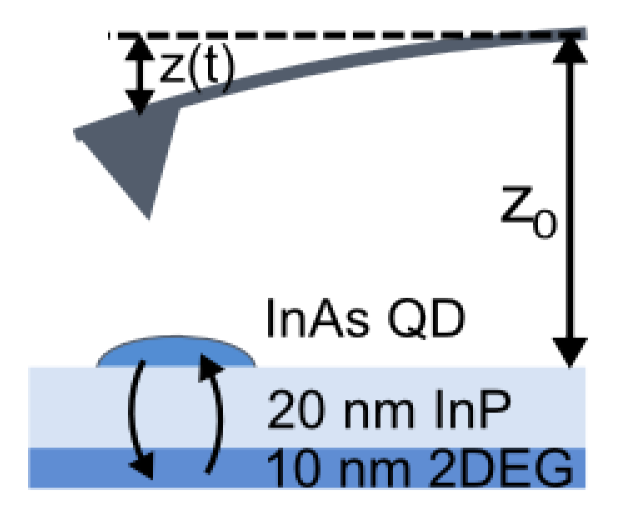

Tunneling rate - Degenerate level (v=2,n_shell=0)
Tunneling rate - Degenerate level (v=2,n_shell=1)
Molecules
Effect of the reorganization energy
Amplitude-dependent response

Preliminary observations on ferrocene molecule

Experimental challenges
Sample preparation
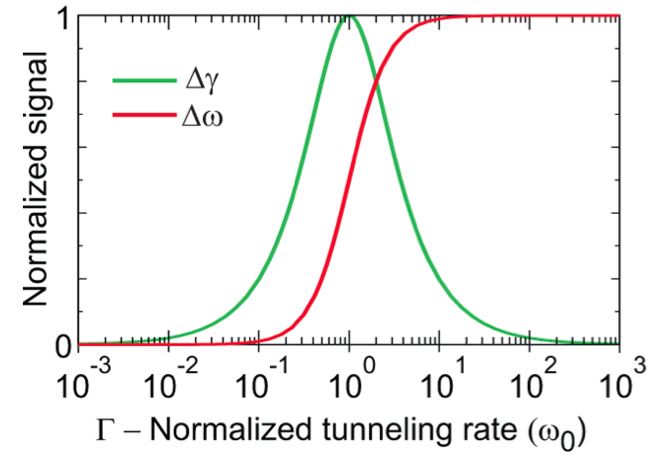

InAs QD / InP
Cockins et al., PNAS (2010)
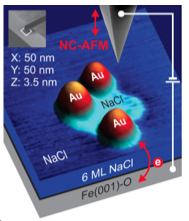
Au cluster / NaCl / Fe
Tekiel et al., ACSNano (2013)
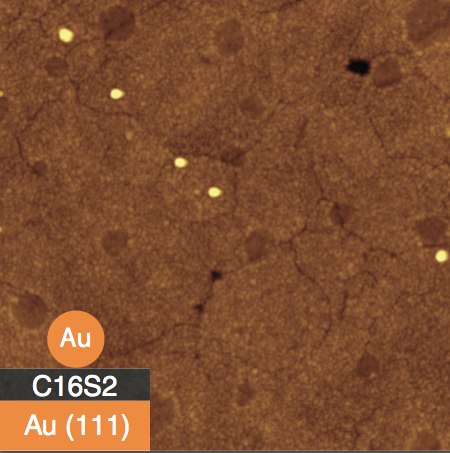
Au NP / C16S2 / Au
Roy-Gobeil et al., NanoLetters (2015)
Accurate dissipation measurement
- The driving efficiency of the cantilever is frequency-dependent because of system resonances.
- The transfer function of the excitation system must therefore be accounted for to accurately measure dissipation.
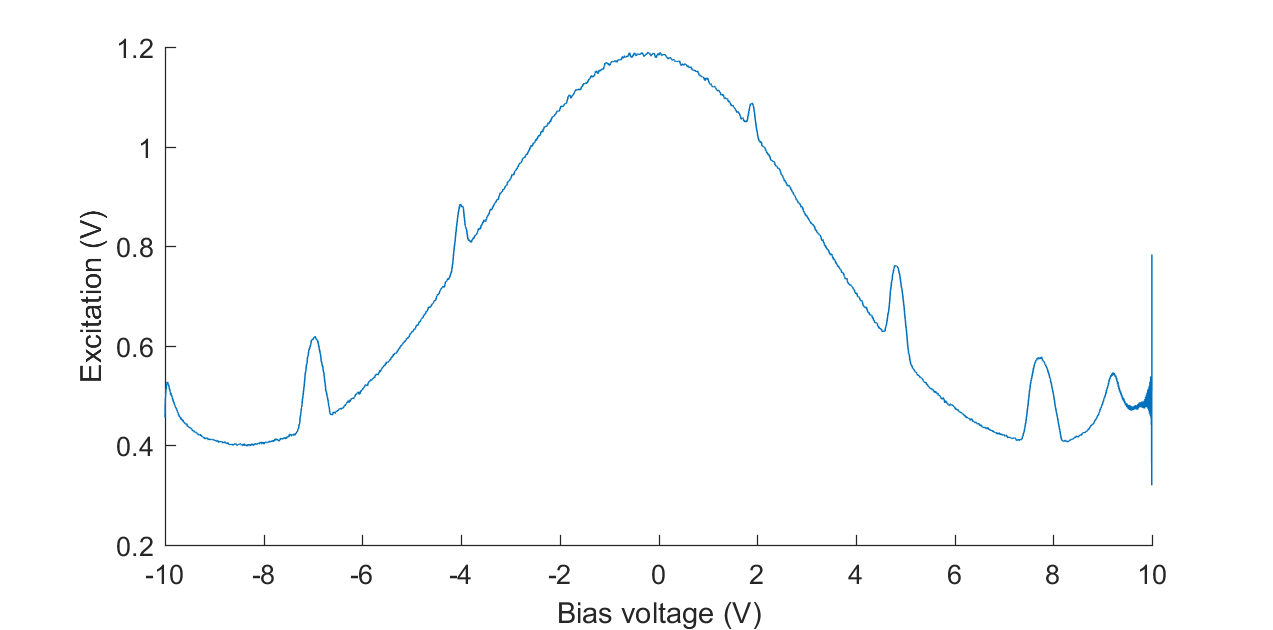 |
 |
Sensitive low-temperature atomic force microscopy
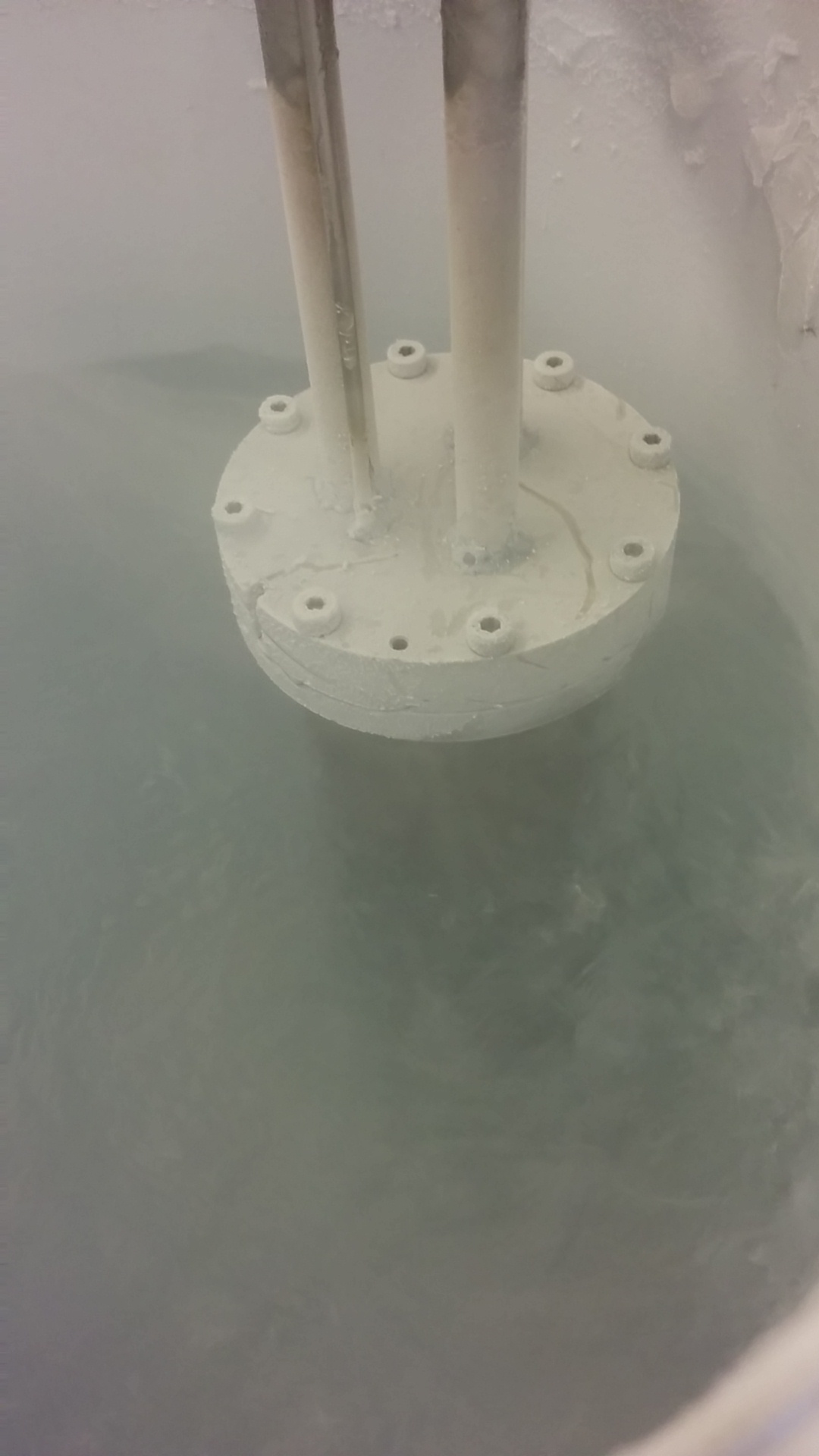

Conclusion
- AFM can be used to perform quantum dot spectroscopy without the need for attached electrodes.
- By perfoming tunneling rate spectroscopy, one can measure the density of states or the detailed electronic structure of quantum dots and nanoparticles.
- The reorganization energy of molecules lead to a unique response of AFM at different oscillation amplitude. Early experimental results of the effect were obtained on ferrocene molecules.
Outlook
Using AFM to probe coherent inter quantum dot tunneling and possibly measure the value of the double-dot relaxation time.

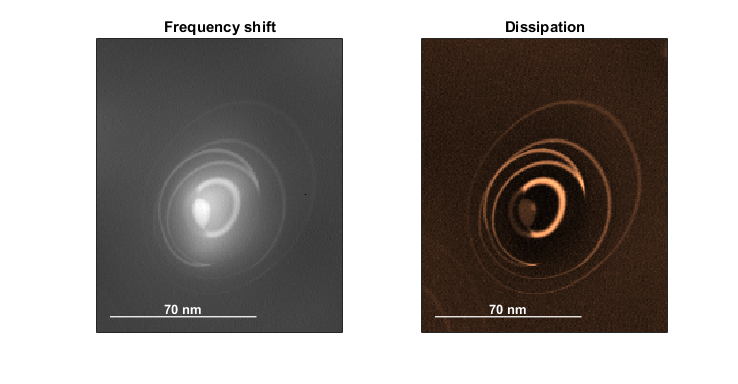
Acknowledgments
Collaborators
Chemistry
- Hanadi Sleimann
- Kai Lin Lau
Theory
- Aashish Clerk
- Steve Bennett
- Jamie Gardner
Experimental
- Peter Grutter
- Yoichi Miyahara
- Lynda Cockins
Funding





